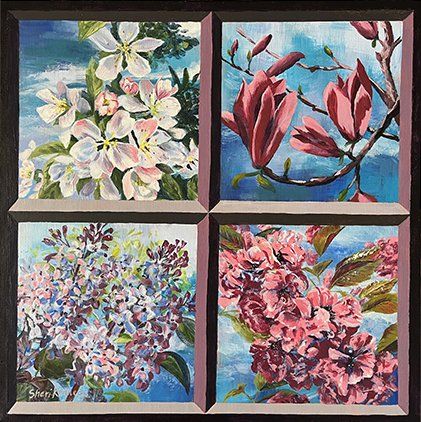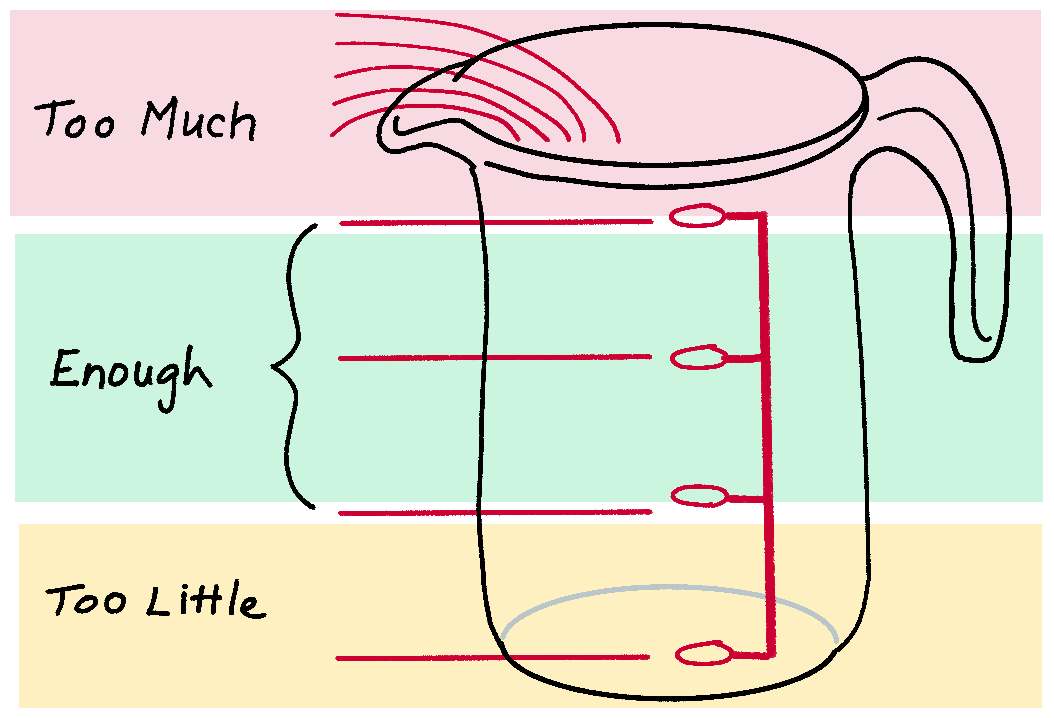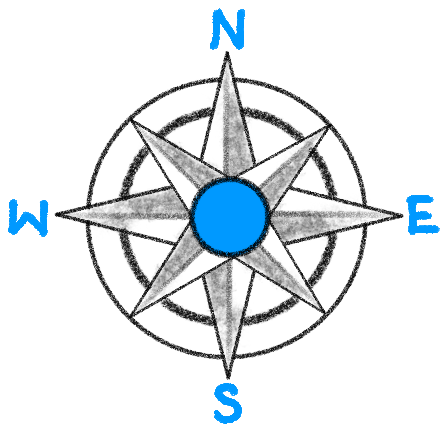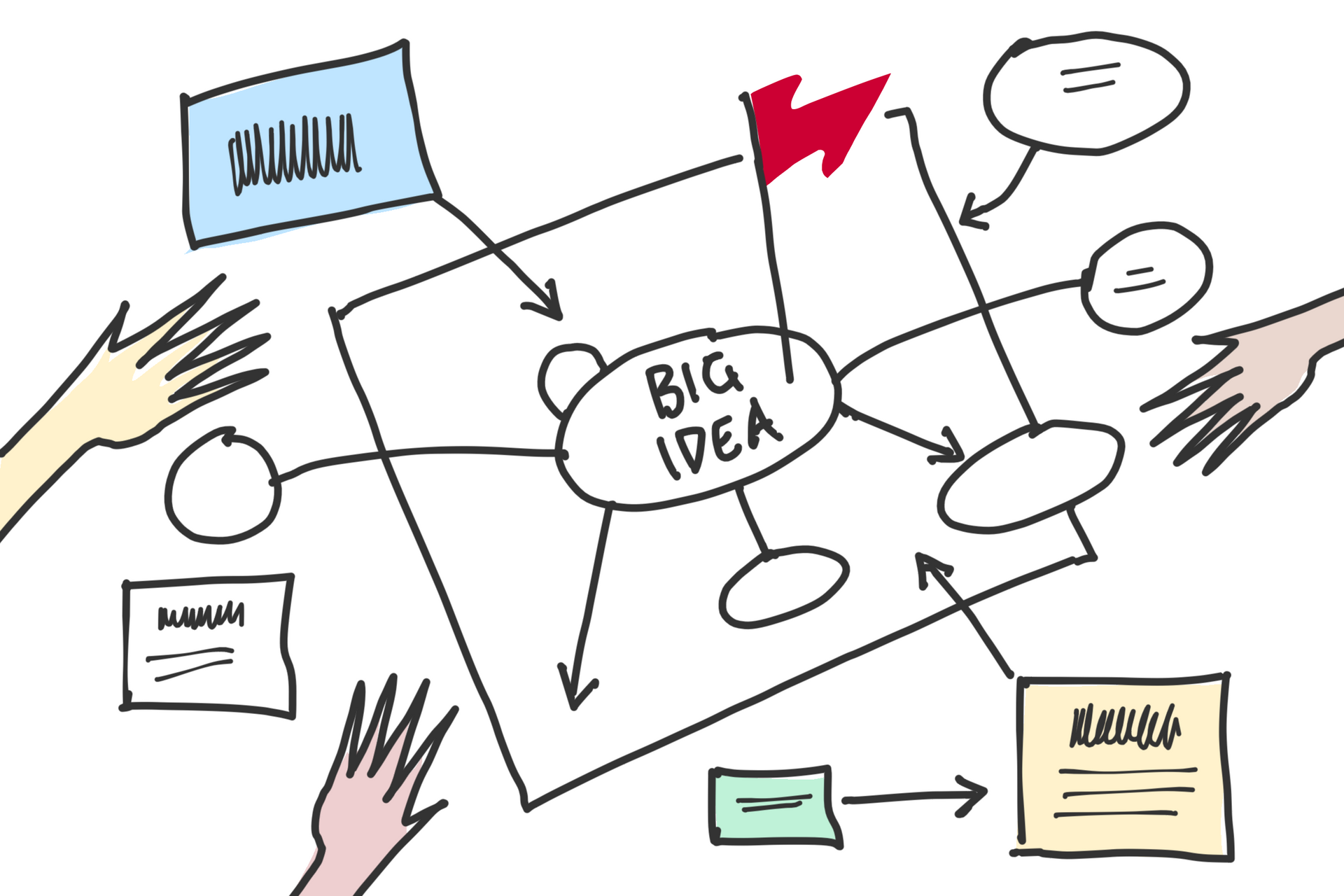5-Step Creativity Method
The Art of Applied Visual Thinking
I believe that everyone is creative, and that creativity takes many forms. I also believe that the creative process has a lot of similarities to the art of living,
This 5-step method...

…is one I use to teach people how to paint.
You might find this process applies to your creative endeavors, whether your creativity takes a more "artistic" form like writing, composing, painting, or dance, or a more business oriented format, such as designing a software solution, planning a project, innovating, or solving a problem for a customer.
Why painting? I have been making art since childhood. I had two grandmothers who painted – one self-taught and the other a graduate of Portland School of Art, so I always felt like I had no choice but to become a visual artist. Looking back, I now believe that the ability to see the world as a painting was only part of the legacy I inherited from my grandmothers. I witnessed their perseverance to keep at it, no matter what.
I was fortunate to accompany my Grandma Kennedy’s to some of the painting classes she taught at senior centers in and around Portland, Maine. For participants, those classes were only partly about learning to paint. More importantly, they were about sharing coffee and donuts, building community, and trading stories about life’s ups and downs.
There have been times when I have chosen visual art over other pursuits, and times that I have set it aside for other, more “practical” (read as lucrative) forms of education and work. Where my own path has led me today is a combination of drawing and painting, facilitation and visual thinking. In business settings, I help make big ideas visible through words, pictures and diagrams. I paint to keep myself grounded and sane (well, more grounded and sane).
From my many years of teaching and painting, I’d like to introduce you to a simple 5-step method for painting.
- Make the canvas not blank. Make a mark, a blob, a background, some texture, anything to get some momentum going.
- Listen for the nudge. Some urge drew you to make this thing. Close your eyes and see if one piece of the puzzle comes clear enough to act on.
- Get down the bones. Narrow down your composition to 3-5 major shapes or lines and put them down BIG to AT LEAST fill the available space and run off the sides.
- Work from back to front, light to dark. Things we see in the distance usually appear more muted and have less contrast. Objects in the foreground tend to have sharper edges and greater differences between lights and darks. Every painting is different, and every painter may have a different approach, but in general, I find this to be a good, fairly universal starting point.
- Respect your work. There just may be a reason why this nudge chose you to bring it to life. Trust the process and give it a chance.
As mentioned previously, this simple process can be applied to any creative endeavor.
1. Make the canvas not blank. Take a first step. Start anywhere. Learn, try something new, experience, grow.

2. Listen for the nudge. What comes next? What's your gut say? What's the vision?

3. Author Natalie Goldberg’s book for aspiring writers says, “Write Down the Bones.” Ask, "What's the high level outline, 3 bold steps or mind map that point in the general direction I want to start?"

4. Work from back to front, light to dark. Dance with your idea. Take some fearless steps toward the nudge that brought you there, step back, see what’s actually shown up, then take the next step. Say yes. Trust that it’ll all work out.

5. Respect your work. It’s your nudge. Trust that the approach you choose will always be the right one. Share with those you trust, listen, smile, say thank you, and keep going.

Create like it’s your last day of vacation.
Trust the process.
P.S. I applied this creative process to create this painting entitled “Family Reunion.” If you'd like to hear the full story, click here for the video. Ready to learn visual thinking? Sign up for our AVT Foundations course. Not sure where to start? Contact Us.











